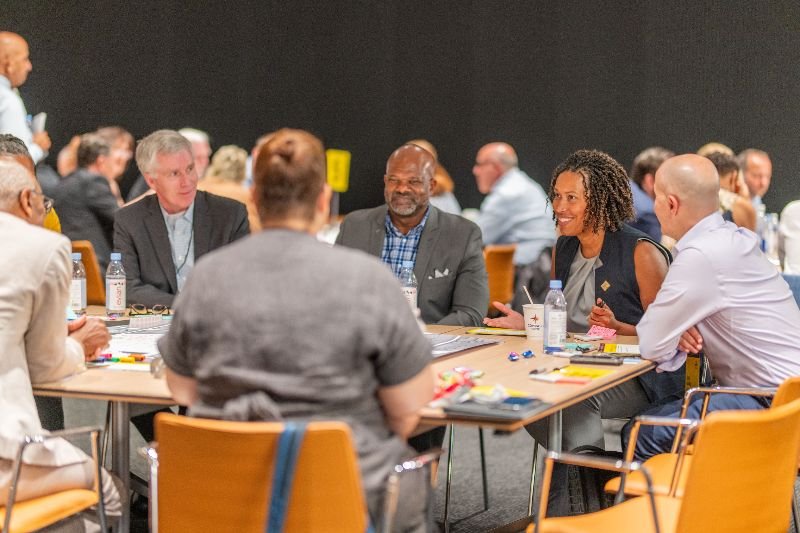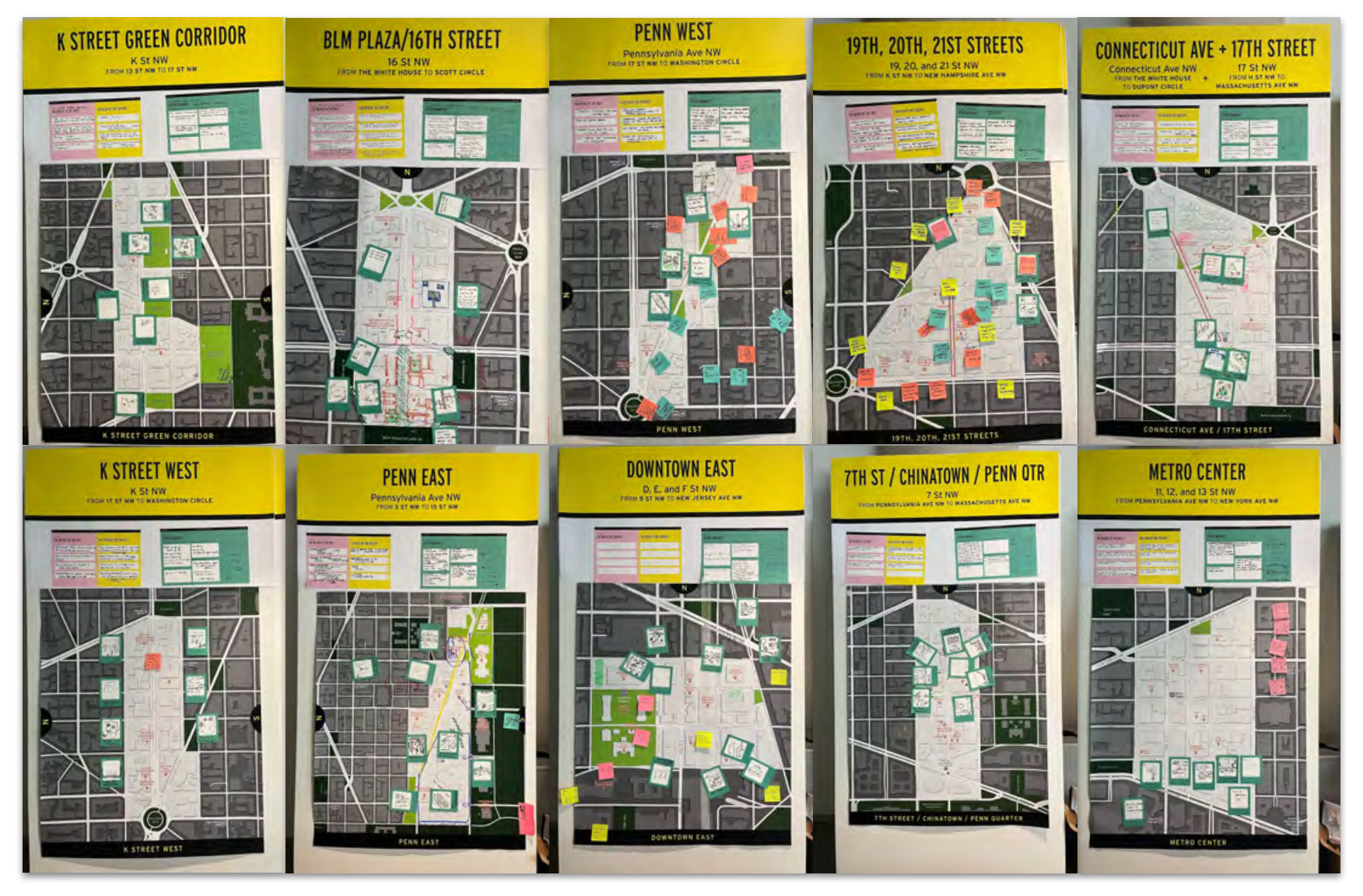Debrief on the D.C. Downtown Futuring Workshop
A Conversation About Ideas for a New Downtown
Family-friendly, pedestrian-friendly, education-focused, and green
No more doom and gloom. The future will be better for the D.C. downtown core, and we can make it so.
That was the overall impression from the roughly 100 participants in the mid-July workshop organized by the Federal City Council and facilitated by renowned design firm IDEO.
In the second of a series of webinars in support of the downtown Action Plan, the Federal City Council’s Tony Williams hosted a debrief with two of the minds behind the Futuring Workshop, IDEO’s Evanne Holloway and Peter Jackson. (Watch the video at the bottom of this webpage.) IDEO produced a report summarizing the Workshop’s main ideas. This will inform the larger Action Plan that will be released in late 2023.
The workshop was held at the Square, which is itself a reimagination of a tired, brutalist office building in the heart of K Street. The participants were carefully curated to reflect a broad cross-section of perspectives, from real estate and government to hospitality, the arts, and nonprofit service providers. Several flew in from peer cities such as San Francisco, Boston, New York City, Philadelphia, and Chicago. Mayor Muriel Bowser participated, as did Councilmembers Kenyan McDuffie and Brooke Pinto.
Mayor Muriel Bowser at the Futuring Workshop.
Everyone was broken into 10 groups, one for each of the downtown nodes or neighborhoods. At the center of each of the 10 tables was a map of the neighborhood the group would spend the two-hour workshop brainstorming ideas for an alternative and better future.
The 10 areas of D.C.’s downtown the Futuring Workshop participants considered.
Each table voted up the best idea for their neighborhood. The results were that the future of D.C.’s Downtown is:
a global education destination
full of green-ways and piazzas
a university innovation hub
an entertainment, arts, and culture district
an international corridor for lifelong learning
a K-20 learning hub with green space for families
a pedestrian-friendly place for concerts and retail
a redeveloped arena surrounded by public spaces
a university hub for hosting debates and incubators
an arts and culture district with an emphasis on pedestrian space
There was a lot of overlap. Participants were excited about spaces that are pedestrian-friendly, family-friendly, and green. They gravitated toward education as a core use for all ages. There was also an appetite for spaces that appeal to families and the those without children. That doesn’t have to be a contradiction. Placemaking is best when space is home to many.
The final map notes for all 10 areas at the end of the workshop.
How did the participants land on these ideas? Let’s take a step back and review the brainstorming process:
To anchor the session, IDEO used a strategic tool called the “futuring triangle.” It looks across three different dimensions: the weight of the past, the push of the present, and the pull of the future.
Downtown was not always the way it looks and feels today. Before there were gigantic blockwide office buildings on K Street, there were residential mansions with a labyrinth of alleys filled with tenement dwellings. The post-World War II era transformed the built environment, bulldozed the dwellings, closed the narrow alleys, and rationalized downtown into a monocultural office district. New highways meant people didn’t have to live close to where they worked. Mixed-used and living where you work would actually be returning to K Street’s roots.
The contours of the original L’Enfant Plan are still here. The federal presence has always been a constant, and the Height Act continues to constrain.
We can learn from the past, too. Mistakes and injustices of the past must not be repeated. Like in so many American cities at the time, African American neighborhoods were swept away to make way for Corbusier-inspired “urban renewal.” But the District is uniquely marked by its fight for emancipation, economic empowerment, and statehood for a historically majority-Black city. Any futuring process must be inclusive of these voices.
Telecommuting is a huge push of the present. Behavior and attitude around work are changing. People are rejecting the 9-to-5 way of working. Entrepreneurship is more widespread than it was in the past and is possible for more people from different walks of life. The explosion in transportation options like dedicated bus lanes downtown helps set the stage for a more accessible future.
Pulling us into the future is a set of signals that IDEO placed into five buckets. First, we’re moving away from monoculture. Second, use and programming will be multifaceted and multigenerational. Third, communities can own value creation. Fourth, our capital city is where global meets local and where the federal government will always have a large presence. Fifth, we must prepare for resiliency and adaptability.
Any futuring exercise must understand realistic constraints. The future of downtown will not be a blank canvas. Costs matter. Political feasibility matters. But design loves parameters because they anchor and guide ideas.
At the same time, the problems of the present must be tackled. If we hope there will be more families downtown, we need to figure out a better way to provide affordable childcare and to improve public safety. If we want major private sector investment to bring big ideas to life, we need a compelling value proposition and settled expectations about the future business climate. Plugging the coming local fiscal revenue gap must come before serious dollars are put toward rearranging the built environment.
The District’s downtown has been ground zero for the post-COVID empty office crisis. Momentum and excitement are growing around the possibility that D.C. can become a model post-COVID city. Someday, we will look back and remember that this Futuring Workshop helped us on the long road to get there.



